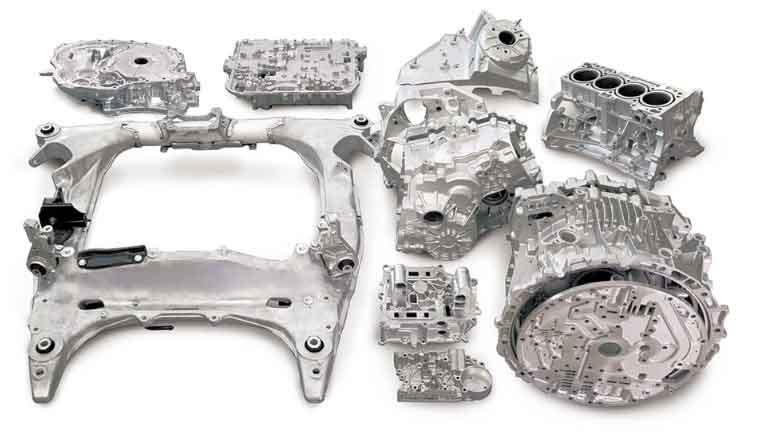Die casting offers significant customization and flexibility in metal component production, making it a preferred choice for many industries. Here are some key aspects highlighting the customization and flexibility of die casting:

- Design Flexibility: Die casting allows for a high degree of design flexibility, enabling the production of complex and intricate shapes with precision. The process accommodates intricate features, thin walls, and fine details, providing designers with ample freedom to create components tailored to specific requirements.
- Material Variety: Die casting supports a wide range of materials, including aluminum, magnesium, zinc, and their alloys. Each material offers distinct properties, such as strength, lightweight, thermal conductivity, corrosion resistance, and electrical conductivity. The ability to select the most suitable material for a particular application allows for customization based on performance requirements.
- Component Customization: Die casting enables customization at the component level. Through the use of modular die designs or multi-slide technology, additional features, inserts, or fasteners can be incorporated into the casting during the die casting process. This eliminates the need for separate assembly operations and allows for the production of more complex and integrated components.
- Surface Finish Options: Die cast components can be produced with various surface finishes to meet specific aesthetic and functional requirements. Surface finishes can include polishing, machining, powder coating, painting, anodizing, or plating. These finishing options provide customization in terms of appearance, corrosion resistance, and compatibility with other components.
- Multi-Cavity Dies: Die casting allows for the production of multiple parts in a single casting cycle using multi-cavity dies. This feature enhances production efficiency and provides flexibility in meeting volume demands. Multi-cavity dies reduce cycle times and tooling costs, making it cost-effective for high-volume production.
- Rapid Prototyping: Die casting supports rapid prototyping, enabling the quick production of functional prototypes for design validation and testing. Prototypes can be produced using the same process and materials as the final production parts, allowing for a more accurate evaluation of form, fit, and function.
- Design Iterations and Tooling Modifications: Die casting molds can be modified relatively easily, enabling design iterations and adjustments without significant cost or time constraints. This flexibility allows for faster product development cycles and the ability to respond to design changes or customer feedback.
- Scalability: Die casting is scalable, making it suitable for both low and high-volume production. With the ability to produce hundreds of thousands or even millions of parts with consistent quality, die casting offers flexibility to meet the changing demands of the market.
The customization and flexibility offered by die casting make it an attractive option for industries requiring intricate, highly engineered components. Whether it’s achieving specific performance characteristics, incorporating unique features, or adapting to design changes, die casting provides the versatility needed to meet diverse manufacturing requirements. Collaborating with experienced die casting experts during the design phase can further optimize customization and flexibility in metal component production.
